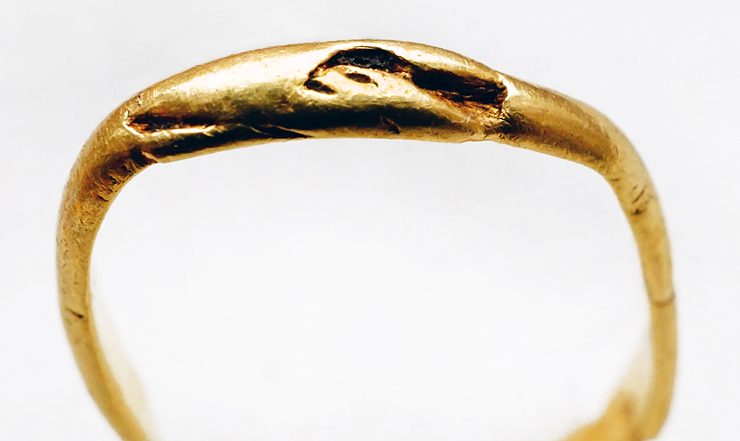
Gold and garnet cure depression and dispel air pollution
When combined with gold, the beautiful red garnet bore a special significance during the Middle Ages. In our modern, Western world we tend to regard both natural and man-made objects as dead matter, in contrast to living creatures. According to the medieval world view, gemstones and metals had properties, in the same way as living creatures, and could be used to cure diseases or cast spells. In addition to its beauty and value, this gold ring set with a garnet served as a talisman and protector against disease.
Gold was considered the finest of all precious metals in the Middle Ages, as it is today, and one of the best known authors of the medieval era, Albertus Magnus, recommended using gold ‘against tremors of the heart and against the black bile that causes melancholy, especially the type of affliction that causes a man to talk to himself while alone’. Garnet belonged to the group of gemstones referred to as carbuncles, which were reputed to be able to dispel poisonous air and fumes.
In medieval times both men and women wore rings set with gemstones, often on more than one finger. He or she who lost this ring left behind a beautiful piece of jewellery with valuable properties, when seen through medieval eyes.
A symbol of a pact?
The small ring is decorated with a four-leaf rosette on each side of a cabochon-cut (rounded) garnet, most likely of the almandine type. On the underside of the ring shank are the remains of a symbol that has been nearly worn away, perhaps two hands meeting in a handshake. This symbol of a pact is called a dextrarum junctio, and was a frequently used motif on engagement rings in medieval times.


Photo: Marianne Vedeler, Museum of Cultural History
References
- Bauer, E. 2015: NIKUs arkeologiblogg (12.10.2015) [Wayback Machine]
- Magnus, A. 1967: Book of Minerals, translated to english by D. Wyckoff. Clarendon Press, Oxford
- Vedeler, M. og H. Kutzke 2015: Fra troskap til svindel – fingerringer og smykkesteiner fra middelalderens Oslo.
- Vedeler, M. og I. Røstad (ed.) 2015: Smykker – Personlig pynt i kulturhistorisk lys. Museumsforlaget, Trondheim